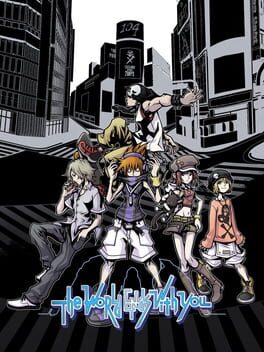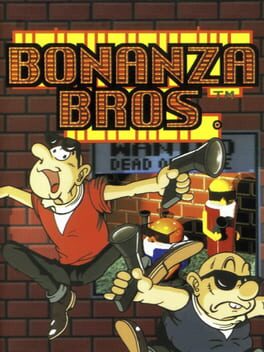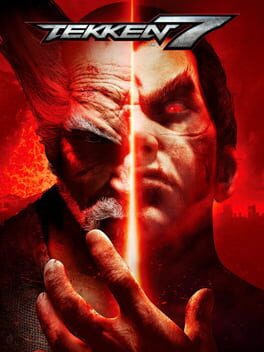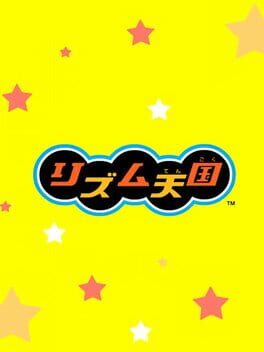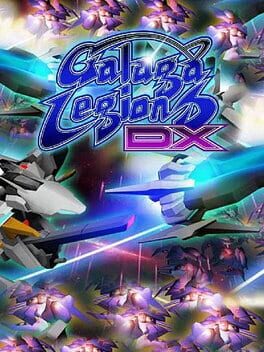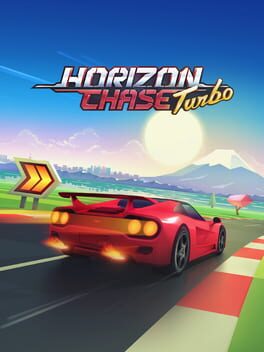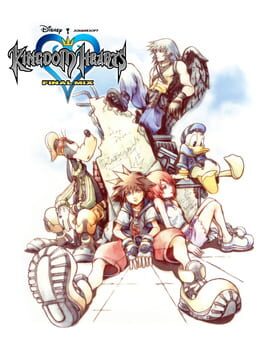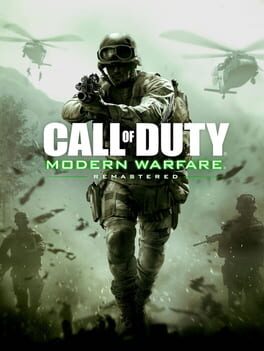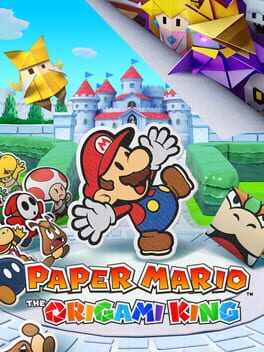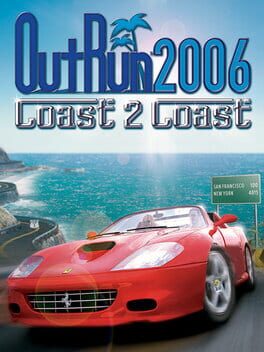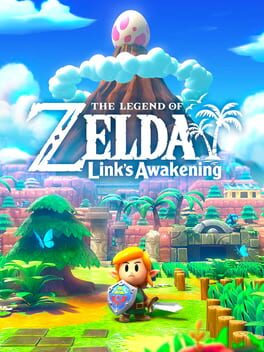Pangburn
+the combat feels so tactile on a touch-screen in a way that transforms the usual square enix action rpg mashing into something more interesting thanks to the many different gestures involved in each ability you acquire. neku also automatically pulls towards whatever you're attacking (for melee attacks anyway), which makes his movement much more fluid
+I'm not going to pretend like the story makes complete sense but it's really good overall! the characters are relatively nuanced and develop as the game goes on, and the pacing is quick enough that you never feel trapped in a sequence you don't care about. mysteries unfold at a nice clip over the course of the game, up until literally the final minutes
+art design is tremendous overall, both for the characters and the world. I love how shibuya's buildings seem to flex and bend as you move; the whole game has a weird super scaler type feel
+music as well, it almost all has vocals shockingly enough and has a great shibuya-kei bent to it, much like jet set radio. in fact, if there was a "jet set radio" rpg it would probably feel like this
+I went back and forth on how I felt about the top-screen fighter, and ultimately I think it's an overall plus for the game. it knows well enough that in most cases you're just going to ignore the top screen, and so you get a selection of AI choices that get the job done. however, you can attack much faster than the AI can, and the AI tends not to block, so in certain battles it's good to handle some of the inputs yourself while letting neku dash-dodge like crazy on the bottom screen. where the game really succeeds is once you finally get enough moves for the partner to do their own thing while you handle jumping and blocking, as well as certain boss fights that make it clear when to shift your focus between the two screens. effectively pulling off a fight like that feels so good
+obv there's some kingdom hearts-esque grinding at play, but the game handles this rather nicely. you can switch your difficulty in the menu at any time, which effects not only damage output/exp gain/pin point gain but also changes the drop rates for given materials, meaning you can use easy to grind for certain materials you need (while also chaining battles together to speed up the process) and then switch to a harder difficulty to grind levels
+since each shop is persistent in the world, you can grow your relationship with each clerk as the game goes on and expand the shop selections more and more, while also gaining new abilities for your wearables. a couple of them are even involved in the plot
+the reaper design rules, it's def got org xiii similiarities but everyone gets their own costume and you get to fight plenty of them as the game goes on. I also like how the walls to new areas are set up by reapers that you interact with, rather than in chain of memories where accessing new rooms was just a door.
+on that tangent, unlike in chain of memories there's virtually no real grinding to get past doors, since all of the requirements can be met in a matter of minutes easily. by the end of the game there's nothing blocking your progression between areas at all beyond random inescapable battles here and there
+enemy design is excellent. virtually every enemy has a unique set of abilities unshared by the rest that fall squarely outside of the usual archetypes for rpg baddies. it does a great job encouraging diversifying your deck in order to deal with any set of enemies that comes your way. boss design is also nearly uniformly interesting, with multiple making excellent use of the two screens and few of them feeling cookie-cutter in any way
-there's some QoL stuff that really could've been useful. a big one is that when you're buying clothes you're not able to see your stats (or if there was an option, I didn't see it), so it can be difficult to figure out if a particular thing is worth wearing
-the map is not great... like it looks cool but each area is labeled based on what brand is big there and not what the area is actually called. it also gives no indication of how to get to each place, which can be annoying at a few points in the game where you aren't basically on-rails
-I'd say the game is overall pretty evenly fun, but there definitely is a bit of a sag in the middle where you aren't fighting many new bosses and your goals are unclear. it's not that big of a deal, but it made me worry that the game had shoved all of its good ideas in the beginning, up until the back quarter where a lot happens pretty quickly and there's a lot of good boss fights
when I first started playing this I got a sinking feeling in my stomach... it quickly occurred to me that this was in many ways a spiritual successor to kingdom hearts chain of memories, a game I really really don't like. however, so much changed between that game and this one that while there's a lot of KH influence overall, this brings a lot of great ideas to the forefront and discards much of the poor design of those. I could keep listing things I loved playing this; it's such a rich concept for a video game and they really nailed the execution against all odds. I haven't dug into the post-game yet but plan to do so, and I'm really happy I played this in anticipation of the sequel coming out in just a few months.
+I'm not going to pretend like the story makes complete sense but it's really good overall! the characters are relatively nuanced and develop as the game goes on, and the pacing is quick enough that you never feel trapped in a sequence you don't care about. mysteries unfold at a nice clip over the course of the game, up until literally the final minutes
+art design is tremendous overall, both for the characters and the world. I love how shibuya's buildings seem to flex and bend as you move; the whole game has a weird super scaler type feel
+music as well, it almost all has vocals shockingly enough and has a great shibuya-kei bent to it, much like jet set radio. in fact, if there was a "jet set radio" rpg it would probably feel like this
+I went back and forth on how I felt about the top-screen fighter, and ultimately I think it's an overall plus for the game. it knows well enough that in most cases you're just going to ignore the top screen, and so you get a selection of AI choices that get the job done. however, you can attack much faster than the AI can, and the AI tends not to block, so in certain battles it's good to handle some of the inputs yourself while letting neku dash-dodge like crazy on the bottom screen. where the game really succeeds is once you finally get enough moves for the partner to do their own thing while you handle jumping and blocking, as well as certain boss fights that make it clear when to shift your focus between the two screens. effectively pulling off a fight like that feels so good
+obv there's some kingdom hearts-esque grinding at play, but the game handles this rather nicely. you can switch your difficulty in the menu at any time, which effects not only damage output/exp gain/pin point gain but also changes the drop rates for given materials, meaning you can use easy to grind for certain materials you need (while also chaining battles together to speed up the process) and then switch to a harder difficulty to grind levels
+since each shop is persistent in the world, you can grow your relationship with each clerk as the game goes on and expand the shop selections more and more, while also gaining new abilities for your wearables. a couple of them are even involved in the plot
+the reaper design rules, it's def got org xiii similiarities but everyone gets their own costume and you get to fight plenty of them as the game goes on. I also like how the walls to new areas are set up by reapers that you interact with, rather than in chain of memories where accessing new rooms was just a door.
+on that tangent, unlike in chain of memories there's virtually no real grinding to get past doors, since all of the requirements can be met in a matter of minutes easily. by the end of the game there's nothing blocking your progression between areas at all beyond random inescapable battles here and there
+enemy design is excellent. virtually every enemy has a unique set of abilities unshared by the rest that fall squarely outside of the usual archetypes for rpg baddies. it does a great job encouraging diversifying your deck in order to deal with any set of enemies that comes your way. boss design is also nearly uniformly interesting, with multiple making excellent use of the two screens and few of them feeling cookie-cutter in any way
-there's some QoL stuff that really could've been useful. a big one is that when you're buying clothes you're not able to see your stats (or if there was an option, I didn't see it), so it can be difficult to figure out if a particular thing is worth wearing
-the map is not great... like it looks cool but each area is labeled based on what brand is big there and not what the area is actually called. it also gives no indication of how to get to each place, which can be annoying at a few points in the game where you aren't basically on-rails
-I'd say the game is overall pretty evenly fun, but there definitely is a bit of a sag in the middle where you aren't fighting many new bosses and your goals are unclear. it's not that big of a deal, but it made me worry that the game had shoved all of its good ideas in the beginning, up until the back quarter where a lot happens pretty quickly and there's a lot of good boss fights
when I first started playing this I got a sinking feeling in my stomach... it quickly occurred to me that this was in many ways a spiritual successor to kingdom hearts chain of memories, a game I really really don't like. however, so much changed between that game and this one that while there's a lot of KH influence overall, this brings a lot of great ideas to the forefront and discards much of the poor design of those. I could keep listing things I loved playing this; it's such a rich concept for a video game and they really nailed the execution against all odds. I haven't dug into the post-game yet but plan to do so, and I'm really happy I played this in anticipation of the sequel coming out in just a few months.
1990
+as an early stealth game it's pretty neat, with a small range of stimuli the guards can respond to and the ability for them to alert other guards of your presence
+obv not as good looking as the arcade original but it's still very cute, with a nice faux-3d style to it
+fast-paced and smooth with the controls, you can easily juke enemies and escape risky situations once you get used to how moving between the two planes works
-basically every gameplay mechanic is introduced in the first couple of levels and then nothing else is ever added. there's only ~3 important varieties of enemies and after you've faced them once it really isn't that interesting facing them again and again
-tldr for what this game is it's not worth it for 30 minutes of repetitious gameplay, with no story beyond a couple of small cutscenes of your characters sneaking around. very slim package
probably should have played the arcade release, but whatever
+obv not as good looking as the arcade original but it's still very cute, with a nice faux-3d style to it
+fast-paced and smooth with the controls, you can easily juke enemies and escape risky situations once you get used to how moving between the two planes works
-basically every gameplay mechanic is introduced in the first couple of levels and then nothing else is ever added. there's only ~3 important varieties of enemies and after you've faced them once it really isn't that interesting facing them again and again
-tldr for what this game is it's not worth it for 30 minutes of repetitious gameplay, with no story beyond a couple of small cutscenes of your characters sneaking around. very slim package
probably should have played the arcade release, but whatever
2009
+given how limited the wii controls are they really nailed the amount of options the player has. granted, some of them tied to motion controls aren't precise (differentiating between vertical and horizontal slash is very poor) but these moves are optional anyway, and you still have plenty of both melee and chainsaw movies to pull off, as well as jumping attacks, a dodge (with a perfect dodge ability) and plenty of new weapons strewn throughout the stages.
+the score attack setting is perfect from a gameplay perspective to squeeze as much fun as you can out of each arena, and the drip feed of weapons, items, stage hazards, and bloodbath challenges give enough direction beyond just "kill until the boss appears." it helps that the stages have plenty of nooks and crannies as well
+bloodbath challenges are very satisfying; it was smart of them to lean into the minigame-friendly aspects of the wii to get huge score bonuses and further increase the carnage
+the overall difficulty is not anywhere near as high as a typical platinum game, which I imagine was done on purpose both to pull new players in as well as smooth over the wii's deficiencies as an action game platform. the dodge's i-frames are generous and deaths instantly respawn you right where you died (tho you only get a couple lives per stage)
+the game somehow leans into insanely-crass 00s culture in a way that isn't off-putting while also centering the story around themes of America's craving for violence and the decadence of the ruling classes. it helps that jrpg yasumi matsuno wrote the plot; I never expect much from action games like this but he really nailed it
-some of the QTEs are way too physically demanding, specifically the ones where you have to shake the wiimote and nunchuck. it really put me off of playing this game too often
-I don't necessarily mind the announcers but there isn't enough dialog for them to be always talking. you can easily hear the same exchange twice within two minutes
-this game really hurts from lack of camera control. the only option is a recenter button, which is also shared for lock-on (the lock-on is very poor)
-using in-game time this took me less than 3 hours to beat. I wasn't expecting a long game by any means, but it's really short
-the boss design is actually good but the main way of dealing damage to most of them is just executing a QTE sequence, and you generally have to do it a few times. would rather just fight the boss normally, maybe with a QTE sequence at the end
this game's framing and combat makes me imagine if no more heroes hadn't been a very small-scale project by a team not accustomed to action games. it's purposefully more relaxed than some of platinum's other output and was honestly a great debut for such a new developer, even if the sales didn't end up being great. the content has not aged well for a mainstream audience and the motion controls would need to be mapped to a controller somehow, but it would still be very cool if this got rereleased on modern platforms
+the score attack setting is perfect from a gameplay perspective to squeeze as much fun as you can out of each arena, and the drip feed of weapons, items, stage hazards, and bloodbath challenges give enough direction beyond just "kill until the boss appears." it helps that the stages have plenty of nooks and crannies as well
+bloodbath challenges are very satisfying; it was smart of them to lean into the minigame-friendly aspects of the wii to get huge score bonuses and further increase the carnage
+the overall difficulty is not anywhere near as high as a typical platinum game, which I imagine was done on purpose both to pull new players in as well as smooth over the wii's deficiencies as an action game platform. the dodge's i-frames are generous and deaths instantly respawn you right where you died (tho you only get a couple lives per stage)
+the game somehow leans into insanely-crass 00s culture in a way that isn't off-putting while also centering the story around themes of America's craving for violence and the decadence of the ruling classes. it helps that jrpg yasumi matsuno wrote the plot; I never expect much from action games like this but he really nailed it
-some of the QTEs are way too physically demanding, specifically the ones where you have to shake the wiimote and nunchuck. it really put me off of playing this game too often
-I don't necessarily mind the announcers but there isn't enough dialog for them to be always talking. you can easily hear the same exchange twice within two minutes
-this game really hurts from lack of camera control. the only option is a recenter button, which is also shared for lock-on (the lock-on is very poor)
-using in-game time this took me less than 3 hours to beat. I wasn't expecting a long game by any means, but it's really short
-the boss design is actually good but the main way of dealing damage to most of them is just executing a QTE sequence, and you generally have to do it a few times. would rather just fight the boss normally, maybe with a QTE sequence at the end
this game's framing and combat makes me imagine if no more heroes hadn't been a very small-scale project by a team not accustomed to action games. it's purposefully more relaxed than some of platinum's other output and was honestly a great debut for such a new developer, even if the sales didn't end up being great. the content has not aged well for a mainstream audience and the motion controls would need to be mapped to a controller somehow, but it would still be very cool if this got rereleased on modern platforms
2015
other than messing around in TTT2 some I had never dove into a tekken entry before, and finally getting into this series was a real treat. the sheer amount of options initially felt like a roadblock for me, but I quickly realized that the depth allows you to find a few set of tools that work well with your playstyle, and once you need to shore up weak areas you can explore for others that fill a niche, or start swapping in new moves for mix-up purposes. the combo system is thankfully very easy to get into and forgiving input-wise. past that the package is rather good: even without any of the dlc the roster is large, and there's a cute story mode that somehow incorporates akuma into the tekken canon. the online netcode isn't great but since the inputs aren't very demanding it's more bearable than it would be otherwise. thankfully I have friends who play this so I'll probably be pulling this one out occasionally throughout the future (until tekken x street fighter finally comes out...)
2008
beautifully fantastic and creative the way that they create a whole unique mini-world for each minigame. on its own each minigame seems unassuming, especially in video clips or screenshots. as a whole tho, it makes the game feel like an unlimited toybox with new ideas every moment, and as the remixes scale up in difficulty an entirely more complex game is welded together from the individual minigames. something about the touch screen combines well with this model of rhythm game, possibly because actions like shaking maracas, strumming a guitar, or pounding a drum feel so much more tactile. it's not very long (tho will test your abilities quite a bit), but this is something I return to time and time again to get more superbs and perfects wherever I can.
2006
+from the get-go a lot of the charm and wit of the rhythm heaven series is present here, which speaks to how skilled these developers were already and how strong of a concept this was from the beginning. seeing as much of the warioware staff was on this game from R&D1, there is a lot of similarities in the graphics and overall minigame design as well
+this game has 25 unique stages and a full set of repeated stages, which surprised me as rhythm heaven on ds has more or less the same amount
+lovely sound for a GBA game, which considering the hardware is no small feat. solid vocal samples as well
+they go out of the box quite a bit with some of the minigames, and there's gems here that are worth checking out. the quiz game is repeat-after-me with a fantastic framing, toss boys has a lot of depth with excellent visual/audio cues, and this game's version of built to scale does a great job emphasizing rhythmic independence between the two hands
-there's some pretty boring games in here as well, it's not all winners. when the game's at its worst, it usually pairs a possibly-interesting theme with lackluster rhythm gameplay, usually just matching very simple on-screen cues. some of the games go nowhere in terms of difficulty progression as well
-the limitations of the GBA sound hardware keep this one from greatness, in a way. songs will often abruptly end or only have a single repeated section. the remixes are also not quite as creative as later ones, and you can tell they often struggle with how to map a different song to one of the games beyond doing the simplest thing imagineable.
-some of these games are sorely missing practice. I understand why they chose to throw the player in blind, but I prefer knowing exactly what I'm getting into, and letting the rhythms they throw at you surprise me instead
highly recommend a look-see if you're into the rest of the series, since it's very short and pretty easy to get into if you're already familiar with the series. I didn't want to list it as a negative since it's not their fault, but the lack of localization has made some minigames more difficult (though the fan translators did a great job regardless). if you're new I would steer you towards a later entry
+this game has 25 unique stages and a full set of repeated stages, which surprised me as rhythm heaven on ds has more or less the same amount
+lovely sound for a GBA game, which considering the hardware is no small feat. solid vocal samples as well
+they go out of the box quite a bit with some of the minigames, and there's gems here that are worth checking out. the quiz game is repeat-after-me with a fantastic framing, toss boys has a lot of depth with excellent visual/audio cues, and this game's version of built to scale does a great job emphasizing rhythmic independence between the two hands
-there's some pretty boring games in here as well, it's not all winners. when the game's at its worst, it usually pairs a possibly-interesting theme with lackluster rhythm gameplay, usually just matching very simple on-screen cues. some of the games go nowhere in terms of difficulty progression as well
-the limitations of the GBA sound hardware keep this one from greatness, in a way. songs will often abruptly end or only have a single repeated section. the remixes are also not quite as creative as later ones, and you can tell they often struggle with how to map a different song to one of the games beyond doing the simplest thing imagineable.
-some of these games are sorely missing practice. I understand why they chose to throw the player in blind, but I prefer knowing exactly what I'm getting into, and letting the rhythms they throw at you surprise me instead
highly recommend a look-see if you're into the rest of the series, since it's very short and pretty easy to get into if you're already familiar with the series. I didn't want to list it as a negative since it's not their fault, but the lack of localization has made some minigames more difficult (though the fan translators did a great job regardless). if you're new I would steer you towards a later entry
+the controls are much more natural than most platformers of the day: mickey has enough weight so that he doesn't stop on a dime, but still feels very controllable with animations that convey his jump arc well a la the modern dkc games
+I like the muted atmosphere to this game. you can definitely tell this is in the very early days of licensed disney games, as virtually nothing about this game has anything to do with disney beyond mickey, minnie, and the design of the villainous witch who traps minnie. as such, the game feels almost like a wholly original sega platformer reskinned to have a license, and the levels of the castle feel surreal and unsettling in an odd way. the excellent use of parallax and the cool colors create this effect for sure
+mickey is pretty much invulnerable when he's bouncing (a bit like scrooge mcduck's walking stick) and you get a lot of height when bouncing off an enemy. the levels are laid out in such a way that it becomes easy to bounce off multiple in a row to get to secret areas and alternate paths
+this is a little more aimed at kids so the difficulty is more reasonable today than many of the more "hardcore" games of this era. still not an easy game but much more approachable than other '90 action titles
+really great animation here. the designs are a little off compared to later disney titles, but once it's in motion it feels very disney, very expressive
-instadeath pits in later levels, usually hidden off-screen in such a way that you may not realize you're about to fall in one
-level variety is a little lacking, partially because the game is so short. also a little odd that there's 7 gems but only 5 levels, would not be surprised if cuts had to be made. I'd also say the themes in general feel a little generic; not all the time, but for some of the rooms there's not much going on
-the gameplay is def solid but there's not really a lot going on, since all mickey can do is bounce and throw projectiles a la shinobi. wouldn't say the stage gimmicks are particularly interesting either
-there's a swinging mechanic and the way it scrolls the screen is incredibly choppy. just unpolished I suppose
very solid action platformer for the genesis, and an early title that won people over to the genesis pre-sonic and price cut. this probably would've been a game I loved as a kid thanks to its simplicity and tight controls.
+I like the muted atmosphere to this game. you can definitely tell this is in the very early days of licensed disney games, as virtually nothing about this game has anything to do with disney beyond mickey, minnie, and the design of the villainous witch who traps minnie. as such, the game feels almost like a wholly original sega platformer reskinned to have a license, and the levels of the castle feel surreal and unsettling in an odd way. the excellent use of parallax and the cool colors create this effect for sure
+mickey is pretty much invulnerable when he's bouncing (a bit like scrooge mcduck's walking stick) and you get a lot of height when bouncing off an enemy. the levels are laid out in such a way that it becomes easy to bounce off multiple in a row to get to secret areas and alternate paths
+this is a little more aimed at kids so the difficulty is more reasonable today than many of the more "hardcore" games of this era. still not an easy game but much more approachable than other '90 action titles
+really great animation here. the designs are a little off compared to later disney titles, but once it's in motion it feels very disney, very expressive
-instadeath pits in later levels, usually hidden off-screen in such a way that you may not realize you're about to fall in one
-level variety is a little lacking, partially because the game is so short. also a little odd that there's 7 gems but only 5 levels, would not be surprised if cuts had to be made. I'd also say the themes in general feel a little generic; not all the time, but for some of the rooms there's not much going on
-the gameplay is def solid but there's not really a lot going on, since all mickey can do is bounce and throw projectiles a la shinobi. wouldn't say the stage gimmicks are particularly interesting either
-there's a swinging mechanic and the way it scrolls the screen is incredibly choppy. just unpolished I suppose
very solid action platformer for the genesis, and an early title that won people over to the genesis pre-sonic and price cut. this probably would've been a game I loved as a kid thanks to its simplicity and tight controls.
2011
a really impressive small twin-stick shooter with interesting wave design and a good deal of content. not really a lot of changes in environments outside of player customization, but the game looks cool enough that I didn't really mind when I was playing it. most waves center around hitting certain ships that will cause all others in its group to destruct, as well as hitting specific bomb ships that will blow up others in the vicinity. beyond that, there didn't feel like a lot to do other than memorize patterns. it doesn't overstay its welcome at all though, and for the few hours I spent with it I had a blast.
2018
I think the gameplay here really has the shine of the classic super-scalar arcade games, specifically in its rollercoaster-like tightness to the controls. it's also impressive how many different tracks they stuck in here, even if many of them do not stick out after a first playthrough. what I didn't appreciate was the constant crashing (pun unintended). I don't know if other versions of the game perform better, but I was forced to reset roughly every 10 minutes, making the marathon and tournament modes completely inaccessible to me thanks to between-race crashes. even in the normal world tour mode it was infuriating, as a crash would often reset my chosen options as well. really hard for me to get past that fact, even if I'm unsure of why it performed so poorly on my machine specifically.
I did at least try to get all of the trophies is most of the areas. I didn't really appreciate having to grab coins and items on the track... that's a feature that feels a bit too "mario kart" to me. the stress to get first was not overbearing at least, other than on a select few courses where the difficulty was ramped up. I would've really enjoyed sinking my teeth into this more if, again, it didn't crash every 10 minutes.
I did at least try to get all of the trophies is most of the areas. I didn't really appreciate having to grab coins and items on the track... that's a feature that feels a bit too "mario kart" to me. the stress to get first was not overbearing at least, other than on a select few courses where the difficulty was ramped up. I would've really enjoyed sinking my teeth into this more if, again, it didn't crash every 10 minutes.
the concepts this game introduced have had a bit of a stranglehold on square enix's further action rpg output, even all the way up to ffxv and ff7r. one thing that thankfully has been improved is mid-battle menuing - who ever thought it was a good idea to try to control a menu in a cursor during a real-time battle? otherwise much of what you'll see from more recent games exists here: AI-controlled companions who serve in support roles to you, hack-and-slash combat, and plenty of special moves. while not as impressive now, especially with how stiff the controls are, it's certainly rock-solid for a game from 2002. what it lacks in fluidity it makes up for in panache.
the game is not helped at all by its intro however, which is quite long and features little of the disney style advertised on the box. when you finally do travel to your first disney world, it's alice's wonderland butchered as a series of boxed rooms with flat decorations on the walls, and a long puzzle of sorts where you must repeatedly flip the orientation of a center room in order to proceed. this is a particularly poor beginning, but in design it demonstrates a big issue with kingdom hearts: confusing room layouts and a lack of direction. these issues wouldn't last in the series, and the environment designs get much better even shortly after wonderland ends. the disney style works wonders with early 6th gen polygons, and it helps that some of the in-game cinematics are quite good.
combat is uncomfortable much of the time, but your companions are relatively solid and can carry you a bit when needed. the difficulty is not too high and the game only begins to drag a bit around the end once all of the disney worlds are through with. I found myself diving into a bit of the post-game content as well, specifically the extra coliseum tournaments and the optional boss battles strewn across the worlds. I don't see myself diving into this again other than to stack trophies on the ps4 version, but a solid attempt at defining action rpgs in an era where fully-3d gameplay was still shaky.
the game is not helped at all by its intro however, which is quite long and features little of the disney style advertised on the box. when you finally do travel to your first disney world, it's alice's wonderland butchered as a series of boxed rooms with flat decorations on the walls, and a long puzzle of sorts where you must repeatedly flip the orientation of a center room in order to proceed. this is a particularly poor beginning, but in design it demonstrates a big issue with kingdom hearts: confusing room layouts and a lack of direction. these issues wouldn't last in the series, and the environment designs get much better even shortly after wonderland ends. the disney style works wonders with early 6th gen polygons, and it helps that some of the in-game cinematics are quite good.
combat is uncomfortable much of the time, but your companions are relatively solid and can carry you a bit when needed. the difficulty is not too high and the game only begins to drag a bit around the end once all of the disney worlds are through with. I found myself diving into a bit of the post-game content as well, specifically the extra coliseum tournaments and the optional boss battles strewn across the worlds. I don't see myself diving into this again other than to stack trophies on the ps4 version, but a solid attempt at defining action rpgs in an era where fully-3d gameplay was still shaky.
didn't really delve into the multiplayer at all but was very satisfied with the single-player campaign. unlike many shooters before it, the game makes it pretty clear that you aren't a god, and that you need to think carefully about your positioning instead of rushing in. where this succeeds is in tense missions like all ghillied up/one shot one kill, or any of the ones where you're clearing out houses looking for prisoners. of course this doesn't make up the entire game, and often you will find yourself in a shooting gallery where enemies infinitely respawn until you push forward into one of their respawn zones and "turn it off" so to speak. these parts can be fun as well, but can be a real downer if you're trapped, or can't tell where the respawn point is even as you mow down enemies.
thankfully the game is very manageable for the most part (other than the television broadcasting center... yuck), and to break up the corridors of enemy combatants there's little sections where you get to use some more exotic weaponry along with a few air support sections. for most of the game, you'll be stuck using some sort of assault rifle with little variation. it's a little too useful compared to the other guns, with the ability to spray-and-pray while also having high ammo count and decent damage. there's plenty of different variations of course, but these will only be noticed by those taking the game seriously online.
otherwise it's a creative military shooter with interesting missions at its best, and simply tedious at its worst. worth a playthrough even if the idea of playing online or mastering the campaign appeals to you, thanks to the campaign's relative brevity.
thankfully the game is very manageable for the most part (other than the television broadcasting center... yuck), and to break up the corridors of enemy combatants there's little sections where you get to use some more exotic weaponry along with a few air support sections. for most of the game, you'll be stuck using some sort of assault rifle with little variation. it's a little too useful compared to the other guns, with the ability to spray-and-pray while also having high ammo count and decent damage. there's plenty of different variations of course, but these will only be noticed by those taking the game seriously online.
otherwise it's a creative military shooter with interesting missions at its best, and simply tedious at its worst. worth a playthrough even if the idea of playing online or mastering the campaign appeals to you, thanks to the campaign's relative brevity.
1994
this game holds a special place in my heart, since I shotgunned about 30 hours of it during a very sad winter break for me, specifically while I was stuck inside sick. ff4 had made great strides in fleshing out what a jrpg's story could accomplish, but the end result was goofy and unpolished. ff6 is a massive leap past that, summoning a somber world with main characters who lack the ability to set things right when they're needed most, and who struggle with regret and self-loathing in a way beyond what it seemed the snes was capable of. in fact, I think the large cast of the game works to its advantage; it's much harder to visually convey a single main protagonist when they're only 16x24 pixels, so it seems better to create a whole cast of them to distribute the load. each character has enough depth to be considered a worthy protagonist while also not hogging too much room.
the battle system in this one is by-the-numbers ff, with the espers differentiating this game from the other ATB titles in the series. this system allows you to when characters learn spells and what stat bonuses they get upon level-up by equipping them with espers that you unlock over the course of the game. the biggest destabilising side effect of this is that everyone can access magic, and since virtually everyone has a large magic pool the game can break in two very easily. in fact, thanks to the depth of builds in this game, you can truly snap the game with little effort as long as you use some basic planning in your esper configuration. on top of their own preferred stats, each of the characters also has a unique ability that supplements their magic and attacks. these are rather unbalanced as well and especially can topple the first half of the game with powerful moves like auto-crossbow or sabin's mid-level blitzes. the fun of FF is not lost in the process however, and the ease of play doesn't come at the cost of strategy.
I will admit that I prefer the linear first half of the game to the open-ended second half. this was a bold move for a '94 game and i think they stuck the landing for what its worth, but the political intrigue that drives some plot in the first half is removed, and the remaining story is disjointed due to each party member having their own particular mission to deal with. however, the amount of secrets to discover and unique dungeons are absolutely ahead of their time; you can go roughly anywhere on the map and end up in some sort of event. regardless, the game leaves a mark no matter how far you get into it.
a quick note: the playstation version I played is easily the worst way to experience this game, since it adds significant load times a game that previously didn't have them at all. otherwise it is just a port of the snes version, which itself is highly playable thanks to ted woolsey's shockingly good translation. the gba version is also supposed to be quite good, and while the mobile/steam port has very ugly art, as far as I am aware it plays just as well. if you wanted to go old school, the snes version is a perfectly fine option and holds up remarkably well.
the battle system in this one is by-the-numbers ff, with the espers differentiating this game from the other ATB titles in the series. this system allows you to when characters learn spells and what stat bonuses they get upon level-up by equipping them with espers that you unlock over the course of the game. the biggest destabilising side effect of this is that everyone can access magic, and since virtually everyone has a large magic pool the game can break in two very easily. in fact, thanks to the depth of builds in this game, you can truly snap the game with little effort as long as you use some basic planning in your esper configuration. on top of their own preferred stats, each of the characters also has a unique ability that supplements their magic and attacks. these are rather unbalanced as well and especially can topple the first half of the game with powerful moves like auto-crossbow or sabin's mid-level blitzes. the fun of FF is not lost in the process however, and the ease of play doesn't come at the cost of strategy.
I will admit that I prefer the linear first half of the game to the open-ended second half. this was a bold move for a '94 game and i think they stuck the landing for what its worth, but the political intrigue that drives some plot in the first half is removed, and the remaining story is disjointed due to each party member having their own particular mission to deal with. however, the amount of secrets to discover and unique dungeons are absolutely ahead of their time; you can go roughly anywhere on the map and end up in some sort of event. regardless, the game leaves a mark no matter how far you get into it.
a quick note: the playstation version I played is easily the worst way to experience this game, since it adds significant load times a game that previously didn't have them at all. otherwise it is just a port of the snes version, which itself is highly playable thanks to ted woolsey's shockingly good translation. the gba version is also supposed to be quite good, and while the mobile/steam port has very ugly art, as far as I am aware it plays just as well. if you wanted to go old school, the snes version is a perfectly fine option and holds up remarkably well.
I've been putting off reviewing this for a while since I finished it since I'm not really sure what to make of this game. to put it simply: there isn't a lot of "game" here to speak of. the puzzle elements are fun and legitimately challenging, but you can usually buy the solution, and the cost is minimal in comparison to the insane amount of coins you're given over the course of the game. the real-time combat is undercooked and frustrating thanks to mario's very short reach with his hammer, and the overworld puzzles are more of a nice sidebar than anything worth sinking your teeth into. yet somehow, despite its lackluster design, this game feels alive and expressive in a way that the paper mario series has not felt in some time, to the point that when I first got it, I couldn't put it down until I was about 25 hours in!
the sad truth is that this game and the two preceding it (sticker star and color splash) were not ruined by any particular developer or by miyamoto himself, as a lot of people like to say online, but by nintendo clamping down on brand restrictions at the beginning of the 2010s. intsys devs have said in interviews that they are not allowed to give individual toads unique identities like they had in early titles, or portray usual mario enemies as being anything other than minions of bowser's army. the dark tones of ttyd and spm aren't kosher anymore, and the turn-based combat of the originals is out of the question now (dunno who gave that order but it sucks!!). sticker star and color splash played these rules straight, much to the chagrin of fans, but this new one finally pushes back in interesting ways that make the game far more exciting and fresh than this series has been in a while.
partners return, tho their presence in battle is marginal until the end of the game. the first partner in particular illustrates the struggles of the design team rather succintly: bobby the bob-omb. he has no defining characteristics beyond his amnesia, and his unique name is passed off as simply your partner (the origami princess olivia) giving him a nickname. indeed, the most interesting thing about him is that he can't remember how to explode, making him useless in combat (he often dozes off, which is quite funny). over the course of his arc, he shifts from an annoyance to a legitimately sweet character, and when he leaves the party there's an undeniable pathos that separates him from "just a regular bob-omb" even while the game makes it undeniably clear that he is simply a confused member of bowser's army, and no different from any other bob-omb troop (as is made apparent later in the game).
by pushing at the bounds of their brand restrictions, we don't quite get a proper follow-up to the classic paper mario entries, but we at least get a functioning simulacrum. the writing resonates with the same energy as the old games even when the world it spins is not quite as bold or unique, and the adventure you're taken on feels like a proper paper mario as you explore large, organic, interconnected areas. of course, the sausage here is more sawdust than actual meat, and this becomes more and more apparent as you work your way through the 30+ hour runtime. however, in a year where the switch lacked many engaging titles, it was a legitimate surprise for this to get announced, and for it to sate the appetite of fans who had waited a long time for a real sequel to the classics. would definitely recommend this to both fans of the series and people looking for a casual adventure on switch.
the sad truth is that this game and the two preceding it (sticker star and color splash) were not ruined by any particular developer or by miyamoto himself, as a lot of people like to say online, but by nintendo clamping down on brand restrictions at the beginning of the 2010s. intsys devs have said in interviews that they are not allowed to give individual toads unique identities like they had in early titles, or portray usual mario enemies as being anything other than minions of bowser's army. the dark tones of ttyd and spm aren't kosher anymore, and the turn-based combat of the originals is out of the question now (dunno who gave that order but it sucks!!). sticker star and color splash played these rules straight, much to the chagrin of fans, but this new one finally pushes back in interesting ways that make the game far more exciting and fresh than this series has been in a while.
partners return, tho their presence in battle is marginal until the end of the game. the first partner in particular illustrates the struggles of the design team rather succintly: bobby the bob-omb. he has no defining characteristics beyond his amnesia, and his unique name is passed off as simply your partner (the origami princess olivia) giving him a nickname. indeed, the most interesting thing about him is that he can't remember how to explode, making him useless in combat (he often dozes off, which is quite funny). over the course of his arc, he shifts from an annoyance to a legitimately sweet character, and when he leaves the party there's an undeniable pathos that separates him from "just a regular bob-omb" even while the game makes it undeniably clear that he is simply a confused member of bowser's army, and no different from any other bob-omb troop (as is made apparent later in the game).
by pushing at the bounds of their brand restrictions, we don't quite get a proper follow-up to the classic paper mario entries, but we at least get a functioning simulacrum. the writing resonates with the same energy as the old games even when the world it spins is not quite as bold or unique, and the adventure you're taken on feels like a proper paper mario as you explore large, organic, interconnected areas. of course, the sausage here is more sawdust than actual meat, and this becomes more and more apparent as you work your way through the 30+ hour runtime. however, in a year where the switch lacked many engaging titles, it was a legitimate surprise for this to get announced, and for it to sate the appetite of fans who had waited a long time for a real sequel to the classics. would definitely recommend this to both fans of the series and people looking for a casual adventure on switch.
sega racers are the perfect combination of arcade-style racing with bouncy, momentum-based physics; basically the fun of driving a car without the boredom of really driving a car. outrun 2006 (and by extension, outrun 2) leans towards the arcade side without sacrificing a need for skill or, by extension, insanely tight powersliding. the feeling of hitting a tight turn pushing 300 mph and dropping gears into a perfect powerslide without losing significant speed feels so good, and pulling it off is far more approachable than most in this genre.
this ps2 version is not the best thanks to some frame drops, but I was playing on a tiny crt anyway so it still felt great, and god knows I'm not spending $180 on an xbox copy. thankfully the single-player content is pretty good with plenty of races, drift competitions, and fulfilling random tasks for your girlfriend, though unless you're a god at these kinds of games the final tier of challenges will surely make you want to quit immediately. between both the original and SP layouts you've got a solid ~30 tracks, and more if you have the (much cheaper) xbox copy of outrun 2. I still like to pull this one up while I'm listening to a podcast or sitting in zoom class just to run through arcade mode. cannot recommend enough
this ps2 version is not the best thanks to some frame drops, but I was playing on a tiny crt anyway so it still felt great, and god knows I'm not spending $180 on an xbox copy. thankfully the single-player content is pretty good with plenty of races, drift competitions, and fulfilling random tasks for your girlfriend, though unless you're a god at these kinds of games the final tier of challenges will surely make you want to quit immediately. between both the original and SP layouts you've got a solid ~30 tracks, and more if you have the (much cheaper) xbox copy of outrun 2. I still like to pull this one up while I'm listening to a podcast or sitting in zoom class just to run through arcade mode. cannot recommend enough
+this game alone is the most influential in terms of zelda dungeon design from my perspective. virtually all of them are based around finding a particular item in the first half to solve puzzles in the second half, with plenty of interlocking room layouts and smart backtracking. many of the lttp dungeons felt more like gauntlets with less critical thinking involved, whereas these dungeons require the player to think about the dungeon as a whole, where to go to next, and how the item they just got affects the area around them. eagle's tower particularly stood out for me: though the mirror shield is not used much within it, the ball-throwing puzzles to drop the fourth story down really stood out as a smart puzzle that required thinking through the layout of the whole dungeon
+really useful QoL upgrades, with sword always being available, pegasus boots and shield getting their own shoulder buttons, and two item slots to work with on top of that
+the game is pretty good at telling you your next objective; a useful side effect of how linear the game is compared to lttp and even oot. having hint centers all over helps significantly as well
+very manageable trading quest. it's well-planned so that as long as you keep up with it you'll always be near the next place you're supposed to go
+I like how the overworld is segmented behind item unlocks, so that more and more opens up as you progress
+jumps are much appreciated. it can be hard to remember to use them because I'm not used to using them in a top-down zelda game, but when it's incorporated well it's really good
+item variety overall is very smart, as it retained all the good ones from lttp while removing the more situational ones. I also thought it was smart that the bombs/bow are in the shop from the get-go, so as to put focus on the other items
-this remake has poor frame pacing and it's extremely noticable. I don't even think the bloom effects look that good... why didn't they just disable it entirely?
-the overworld is intricate to the point that it can be difficult to find out where you are supposed to go, especially around the halfway point. not so much because the world is confusing, but rather that the warps are limited in scope and backtracking can be very tedious due to your lack of movement options. really dampened my impression of the game thanks to this
-in relation to the above point, I really did not feel pushed to re-explore parts of the world I had already been to thanks to how slow it is to get around sometimes. the world isn't very large but even so I often just wanted to move on instead of revisiting areas to possibly find new collectables
-dampe's dungeon maker looks stupid. didn't even bother setting foot inside
-would have really liked d-pad support, since this game is 8-way movement only. would have also appreciated being able to remap one of the shoulder buttons... I don't use pegasus boots all that often since many room layouts don't work well with it
-thanks to the much higher resolution of the switch over the game boy, it makes many of the areas seem oddly small since you can often see what were previously multiple rooms all at once. the cutesy art style is very appealing as well but it removes some of the unsettling atmosphere as well
the dungeons really blew me away here after being unimpressed by those in lttp. however, I still had some reservations on aspects of it outside of the dungeons, and this port has some notable issues that really should have been taken care of, especially since this is not grezzo's first rodeo. I still have yet to play the gbc version outside of the opening sections, but overall I would say this is definitely a solid modern way to experience the original, with a lot of the positives (and some negatives) poking out from below the new coat of paint.
+really useful QoL upgrades, with sword always being available, pegasus boots and shield getting their own shoulder buttons, and two item slots to work with on top of that
+the game is pretty good at telling you your next objective; a useful side effect of how linear the game is compared to lttp and even oot. having hint centers all over helps significantly as well
+very manageable trading quest. it's well-planned so that as long as you keep up with it you'll always be near the next place you're supposed to go
+I like how the overworld is segmented behind item unlocks, so that more and more opens up as you progress
+jumps are much appreciated. it can be hard to remember to use them because I'm not used to using them in a top-down zelda game, but when it's incorporated well it's really good
+item variety overall is very smart, as it retained all the good ones from lttp while removing the more situational ones. I also thought it was smart that the bombs/bow are in the shop from the get-go, so as to put focus on the other items
-this remake has poor frame pacing and it's extremely noticable. I don't even think the bloom effects look that good... why didn't they just disable it entirely?
-the overworld is intricate to the point that it can be difficult to find out where you are supposed to go, especially around the halfway point. not so much because the world is confusing, but rather that the warps are limited in scope and backtracking can be very tedious due to your lack of movement options. really dampened my impression of the game thanks to this
-in relation to the above point, I really did not feel pushed to re-explore parts of the world I had already been to thanks to how slow it is to get around sometimes. the world isn't very large but even so I often just wanted to move on instead of revisiting areas to possibly find new collectables
-dampe's dungeon maker looks stupid. didn't even bother setting foot inside
-would have really liked d-pad support, since this game is 8-way movement only. would have also appreciated being able to remap one of the shoulder buttons... I don't use pegasus boots all that often since many room layouts don't work well with it
-thanks to the much higher resolution of the switch over the game boy, it makes many of the areas seem oddly small since you can often see what were previously multiple rooms all at once. the cutesy art style is very appealing as well but it removes some of the unsettling atmosphere as well
the dungeons really blew me away here after being unimpressed by those in lttp. however, I still had some reservations on aspects of it outside of the dungeons, and this port has some notable issues that really should have been taken care of, especially since this is not grezzo's first rodeo. I still have yet to play the gbc version outside of the opening sections, but overall I would say this is definitely a solid modern way to experience the original, with a lot of the positives (and some negatives) poking out from below the new coat of paint.
